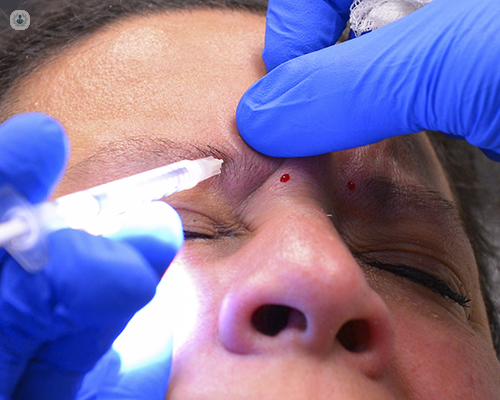How safe is the use of fat transfer in cosmetic procedures?
Escrito por:In this article below, revered consultant orthopaedic and plastic surgeon, Dr John Skevofilax, describes what is typically involved when it comes to fat transferring in cosmetic procedures.

What is involved in fat transfer in cosmetic procedures?
There are different types of fat transfer. Firstly, we have liposuction, where the fat is sucked out, and the fat is then filtered through a special filter that takes out the fluids whilst keeping the healthy fat cells.
Then, after that, we clean it, and then put it back into the body part that we’re working on. Fat transfer can be done to the face, with a smaller syringe, and you could also use fat transfer on the breasts, where patients would get a breast augmentation with fat.
Botox is also one of the main fat transfer cosmetic procedures. Penis enlargement fat transfer is also a procedure available for men, where the penis is made wider.
Who is the ideal candidate for fat transfer procedures? Are there limitations on age or body type?
If patients wish to increase the size of their buttocks, a lot of fat will be required. A patient who actually already has that extra fat is the ideal candidate for a procedure like this.
For smaller things, like fat transfers to the face and the penis, not a lot of fat is required. You will need quite a bit of fat on your body if you wish to undergo a breast augmentation.
In terms of results, what can patients expect?
The objective of these procedure centres on increasing the size of the body part on which we are performing. Statistically, about 40 per cent of the fat can dissolve away, but now with new techniques available, an 80 per cent success rate is usually achieved. The results for all of the mentioned procedures can last for as long as between 10 and 15 years.
How safe is the use of fat transfer in cosmetic procedures?
Fat transfer is pretty safe nowadays. There are, however, two main risks associated with fat transfer: infection and experiencing a fat embolism (where the fat blocks arteries to heart or lungs).
What we use nowadays is called a blunt cannula, which helps avoid piercing anything that is not supposed to be pierced, and actually pushes away the blood vessels. Secondly, when using this cannula, you don’t try to go directly into the muscle. If you just stay peripheral, it should be more than safe.
To schedule in an appointment with Dr John Skevofilax, you can visit his Top Doctors profile today to do just that.



